Rasta Way of Growing Hair
History
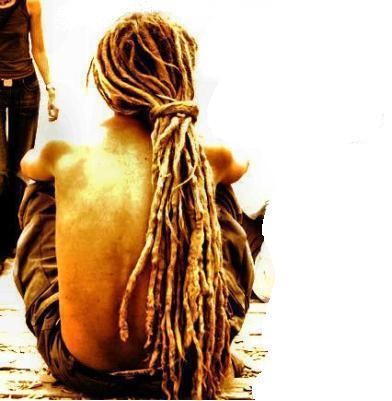
Dreadlocks are strands of hair that become matted together after not being combed for a period of time. Dreadlocks are not just a popular hairstyle, some dread their hair for spiritual reasons. Rastafarians are a group of people who do this for the latter reason. They wear their dreads as an expression of an inner spirit, mind and soul journey that they put themselves through when starting to grow their deadlocks. For them, the term “dread” refers to a “fear of the Lord”; expressed in part as alienation from the perceived decadence and other evils of contemporary society and a return to the Covenant with the Almighty.
Rasta, or the Rastafari movement, is a religion that accepts Haile Selassie I, the former Emperor of Ethiopia, as God incarnate, whom they call Jah. He is also seen as part of the Holy Trinity as the messiah promised in the Bible to return. The name Rastafari comes from Ras (Prince, Head, Duke or Chief) Tafari Makonnen, the pre-coronation name of Haile Selassie I.
The movement emerged in Jamaica among working-class and poor in the early 1930s, arising from an interpretation of Biblical prophecy partly based on Selassie’s status as the only African monarch of a fully independent state, and his titles of King of Kings, Lord of Lords, and Conquering Lion of Judah (Revelation 5:5).
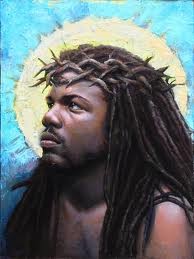 Rastafarians believe dreadlocks to be supported by Leviticus 21:5 “…They shall not make baldness upon their head, neither shall they shave off the corner of their beard, nor make any cuttings in the flesh…” and the Nazarite vow in Numbers 6:5 “…All the days of the vow of his separation there shall no razor come upon his head: until the days be fulfilled, in the which he separateth himself unto the LORD, he shall be holy, and shall let the locks of the hair of his head grow…” Another well-known character in one of the stories of the bible is Samson, who was a Nazarite with “seven locks”, which Rastas point out that these “seven locks” could only have been locks. (Get Knotted, 2017)
Rastafarians believe dreadlocks to be supported by Leviticus 21:5 “…They shall not make baldness upon their head, neither shall they shave off the corner of their beard, nor make any cuttings in the flesh…” and the Nazarite vow in Numbers 6:5 “…All the days of the vow of his separation there shall no razor come upon his head: until the days be fulfilled, in the which he separateth himself unto the LORD, he shall be holy, and shall let the locks of the hair of his head grow…” Another well-known character in one of the stories of the bible is Samson, who was a Nazarite with “seven locks”, which Rastas point out that these “seven locks” could only have been locks. (Get Knotted, 2017)
Contemporary Rastas say that it is not a religion, but a way of life. Most Rastas do not claim any sect or denomination, and thus encourage one another to find faith and inspiration within themselves.
How to grow Dreadlocks
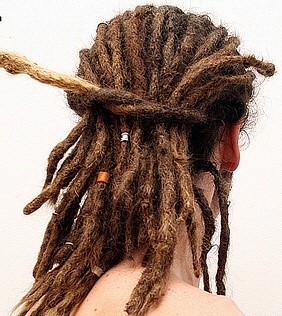 Whether you would like to dread your hair for style, beliefs or spiritual reasons, doing it for the first time can be daunting. It may take several hours depending on the length of your hair, but following the next steps can be of help if followed properly.
Whether you would like to dread your hair for style, beliefs or spiritual reasons, doing it for the first time can be daunting. It may take several hours depending on the length of your hair, but following the next steps can be of help if followed properly.
Step 1: Grow out your hair at least 3 inches. The longer your hair, the better results you will get. You want to make sure that while you are doing this, you leave your hair as natural as possible. This means avoiding the use of chemicals or heat tools as they will make your hair weak and harder to lock.
Step 2: Determine the size of your dreadlock. This will depend on how much hair you have got. The more hair you have, the thinner the dreadlocks that you can get, if desired. Fuller locks can be a better choice for people with thinning hair.
Step 3: Dread your hair only when it is clean and dry. Make sure you clean it at least 2 hours before starting the process and no more than 2 days before it. The shampoo you use should be one made with 100% natural ingredients. Just make sure you don’t use conditioner. Depending on your hair, we recommend you use any of the 5 Morrocco Method shampoos. Even if some people may encourage to not wash for hair for more than 2 days before the process, this can be counterintuitive, since dirty and greasy hair makes more difficult, longer and can also prevent your dreadlocks from forming well.
Step 4: Brush your hair. It is very important to brush your hair before dreading, since you will make it easier to separate it, section the strands and get rid of tangles.
Step 5: Sectioning. You can choose the thickness of your strands as you desire; however, for most people 1 to 2 inches square sections will give better results. When sectioning, start with the underside of your hair and work your way to the front. Once you sectioned it, secure each section with a rubber band and do this until you finish the entire head.
Step 6: Backcombing. Use a dread comb to comb the section hair backwards, starting at least an inch or closer to the scalp. Backcomb a few strands at a time and eventually the hair will begin to build up at the roots. After this, you can twist your hair to speed up the dreadlocks process. Continue backcombing while making sure that the hair is as tight as possible and once you reach the end, secure the new lock with a rubber band and put another at the top to help it also remain in place at the base. Repeat with each section and tie each new dread with 2 rubber bands (top and end).
Step 7: Waxing. This process helps tame strands and aids in the faster maturity of the created dreadlocks. Make sure you use a small amount, and work it between your fingers to soften it or remove away clumps. Apply it, then, o the backcombed sections starting from the roots and working your way to the tips. We recommend the Styling Dragon Pomade which is made with real bees wax for a natural hold.
Step 8: Rolling. After waxing the hair, the next step is rolling. It will give a better finish to your dreadlocks. Starting at the roots, you should briskly roll your newly created dreadlocks between your hands. From the beginning to the end.
Step 9: Verification. Go through all the sections to ensure that everything looks beautiful. If there are any loose strands you will have to redo the dreadlock. This means, backcombing and waxing them again, making sure they do not become too waxy.
Step 10: Dry your hair. Since your hair may end up a little damp, it is recommended to dry it through heat, to ensure that any excess or clumps of wax get stuck in your hair. If you want a more natural way, you can let your hair dry out under the sun. This will protect your hair from any additional heat. If you choose to use an electric hairdryer, make sure it doesn’t touch your hair at all.
Dreadlock Care
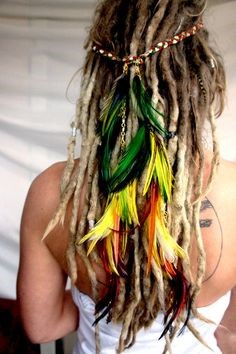 Once your dreadlocks mature, you should wash them only with 100% natural shampoos, like the ones offered at Morrocco Method, since they won’t leave any resides on them. Also, only after they have matured, you can use 100% natural conditioners like the Floating Lotus Conditioner or Pearl Essence Crème Conditioner to keep your locks in good shape. As a result, this will prevent itchiness, dandruff, breakage and dryness. When applying them, gently massage the scalp as it will help improve blood circulation and stimulate the production of natural oils that will keep your dreads soft and moist. If locks are too soft, avoid conditioner on roots and instead apply to the rest of the hair.
Once your dreadlocks mature, you should wash them only with 100% natural shampoos, like the ones offered at Morrocco Method, since they won’t leave any resides on them. Also, only after they have matured, you can use 100% natural conditioners like the Floating Lotus Conditioner or Pearl Essence Crème Conditioner to keep your locks in good shape. As a result, this will prevent itchiness, dandruff, breakage and dryness. When applying them, gently massage the scalp as it will help improve blood circulation and stimulate the production of natural oils that will keep your dreads soft and moist. If locks are too soft, avoid conditioner on roots and instead apply to the rest of the hair.
The locking process is continuous because your hair never stops growing. It may seem that it doesn’t grow as much as it used to, but this is not completely true. Since your hair now has to go under and through the locks, it just has a longer distance to travel. The process does not hamper your hair growth. So, as your hair grows, you need to use some more styling gel like Styling Dragon Pomade on it after washing it and then palm roll the locks again to ensure the new hairs are locked in. Just make sure you don’t over twist your hair, since it can make it weak and more prone to breakage.
In order to keep your dreadlocks healthy, it is recommended to use a silk scarf to sleep to prevent tangles and breakages. Also, since getting your hair wet too often is not recommended, when you get into the water, make sure to use a swim cap for swimming and a shower cap for showering when you are not planning on washing it. When getting it wet, air dry it.
Lastly, another key factor in the health of your dreadlocks is nutrition. Eating poorly will slow hair growth and zap hair strength. As a matter of fact, a common tenet of Rastafarian beliefs is the sharing of a central Livity among living things, and what is put into one’s body should enhance Livity rather than reduce it. The general principal is that food should be natural, or pure, and from the earth. Rastas, therefore, also avoid processed foods, because they believe that internal health is reflected in their hair as well.
References:
1. Jamaica rastafarian loven. (2010). How to Get Dreadlocks. Retrieved 9 May, 2017, from http://www.jamaicanrastafarianlove.com/get-dreadlocks-hair/
2. Knattydreadcom. (2017). Dreadlocks & Healthy Natural Hair. Retrieved 9 May, 2017, from https://www.knattydread.com/pages/dreadlocks-healthy-natural-hair
3. Machohairstylescom. (2017). MachoHairstyles. Retrieved 9 May, 2017, from http://machohairstyles.com/how-to-do-dreads/
4. Getknotted. (2017). GET KNOTTED “NATURAL DREADLOCKS”. Retrieved 9 May, 2017, from http://get-knotted.weebly.com/rastafari.html
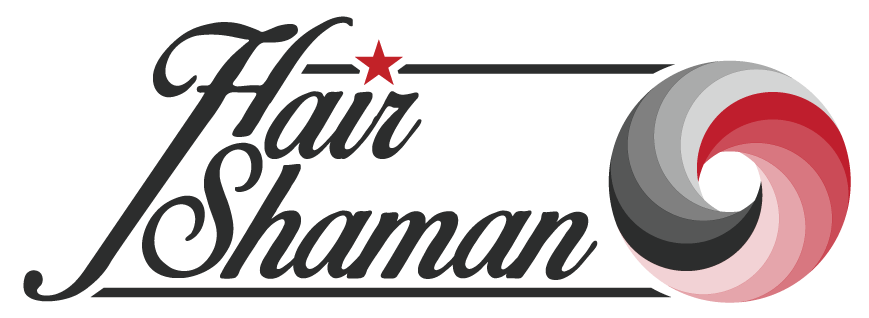

i love dread